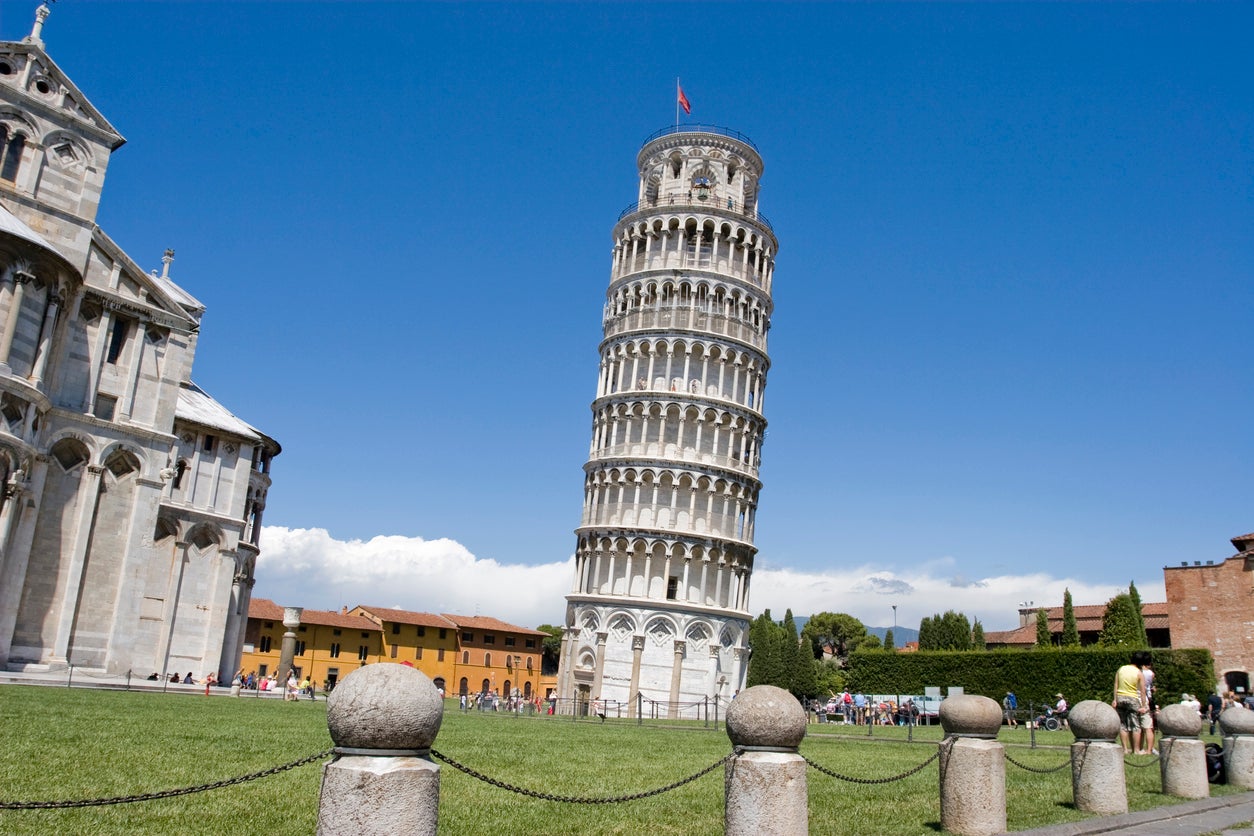The secret behind the Leaning Tower of Pisa surviving four earthquakes
Researchers reveal that the steadfast structure’s stability lies in its soil

New research has revealed how the iconic Leaning Tower of Pisa has managed to stay standing – and intact – in the face of four strong earthquakes and a precarious lean of five degrees.
The vulnerability of the Unesco World Heritage Site has mystified engineers and scientists for millennia. Moderate seismic activity was expected to significantly damage the 58m tall Tower, or even result in collapse but, incredibly, this has not happened.
A research group of 16 engineers at the University of Bristol has now discovered that the considerable height and stiffness of the Tower, combined with the softness of the foundation soil, ensure it doesn’t resonate with earthquake ground motion.
This phenomenon is known as dynamic soil-structure interaction (DSSI) and the Tower now holds the auspicious title of world record holder in DSSI effects.
“Ironically, the very same soil that caused the leaning instability and brought the Tower to the verge of collapse, can be credited for helping it survive these seismic events,” said Professor Mylonakis, head of the
Earthquake and Geotechnical Engineering Research Group at the University of Bristol.
The Tower continues to attract visitors keen to marvel at this remarkable architectural feat. Construction on the Tower began in 1173 and continued for about 200 years due to the onset of a series of wars.
Multiple efforts to maintain the historic structure have occurred over the years. In the 1920s, the foundations were injected with cement grouting with the intention of stabilising the Tower, while in 1990, a decision was made to completely close the site to visitors due to fears it was at risk of toppling.
It was the first time the Tower had been closed in 800 years. It reopened again in 2001 and remains one of Italy’s most popular tourist attractions.
Subscribe to Independent Premium to bookmark this article
Want to bookmark your favourite articles and stories to read or reference later? Start your Independent Premium subscription today.

Join our commenting forum
Join thought-provoking conversations, follow other Independent readers and see their replies